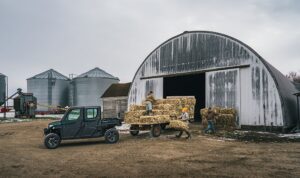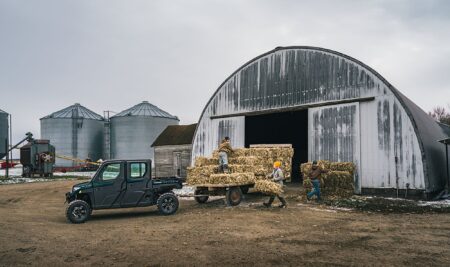Every year, my family travels to a Christmas tree farm in western North Carolina to choose our own tree. After the holidays, we put the tree out on the curb so the city can turn it into mulch.
Recently, I found out about a unique recycling program for live Christmas trees at Fort Macon. The pre-Civil War era fort sits along the beach in the southeast part of the state. My boys and I walked from the fort to the beach, and when coming back up a different path in the dunes, we noticed Christmas trees lying on the sand.
When I noticed the first tree, I thought I was seeing things. Then I noticed more trees lying along the dunes. When we got back to the fort, I asked one of the volunteers about the trees.
The state park has been using Christmas trees as brush barriers to stabilize the beach’s dune and prevent erosion since 1964. Every year they set up a collection site for residents to drop off trees. Tractor trailers have brought in trees from other parts of the state. About 1,500 trees are donated each year.
The tree’s branches will catch sand, burying the tree before next Christmas. The next year another layer of trees will be added.
This is a low-cost, effective way to prevent shoreline erosion. Using vegetative debris to prevent sand from leaving areas that are disturbed is listed as a best management practice. Fort Macon is in an area often hit by tropical storms and hurricanes, so erosion is a huge concern. One article I found mentioned the Civilian Conservation Corps using tree clippings and branches as brush barriers as far back as the 1930s.
Fort Macon is a state park and meets the state’s rules for an area of natural importance that may be easily destroyed by erosion. This allows them to get an approved permit for placement of the trees making sure turtle and bird nesting habitat aren’t disturbed.
I’ve seen sand fences and even bags of sand used as barriers to erosion. This was the first time I’d seen Christmas trees used. I can’t think of a better way to extend the life of a live Christmas tree than protecting the dunes along our vulnerable beaches.


:max_bytes(150000):strip_icc()/102382793_soybeans-1a81c6603895423a8c6518aeefaa2b19.jpg)
:max_bytes(150000):strip_icc()/48671043887_7bb824daff_o-ea6663a7cacb4a7fa70d7b9a5af1f1fa.jpg)



:max_bytes(150000):strip_icc()/Lifsey-XmasTreeBeach-e65fc16c26ef4dc6b58679915b04a939.jpeg)


:max_bytes(150000):strip_icc()/WebMedium_JPG-2025-orv-family-image-00307-27c767eba092415c9f7b4751603e7840.jpg)
:max_bytes(150000):strip_icc()/54422218704_4306ac9563_o-233521f62c594e098877df4c9a3cba63.jpg)